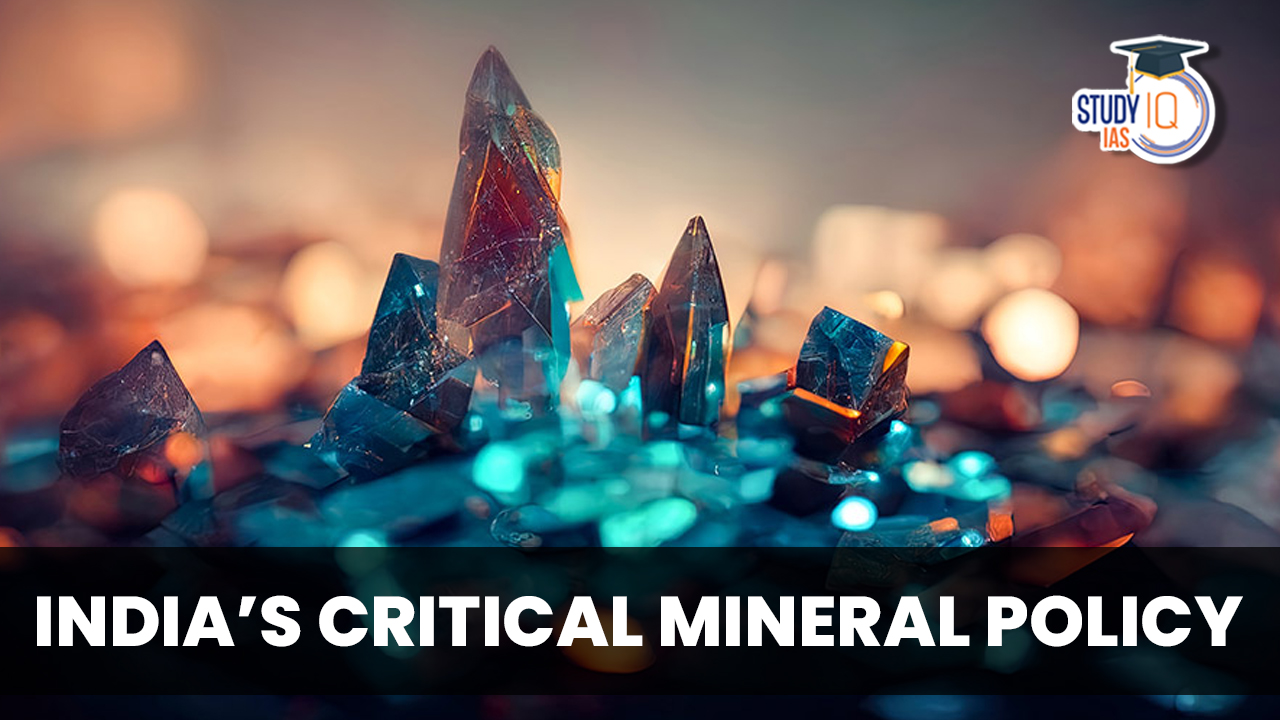Table of Contents
Context: The Parliament passed the Mines and Minerals (Development and Regulation) Amendment Bill, 2023, in a bid to attract private sector investment in the exploration of critical minerals in the country.
What are Critical Minerals?
- Critical minerals, also known as strategic minerals or rare earth elements, are mineral resources that are essential for the functioning of modern economies, advanced technologies, and various industries, including national security.
- These minerals are characterized by their vital role in the production of goods and services, along with their potential for supply chain disruption due to factors such as limited availability, geopolitical conflicts, and price volatility.
- Critical minerals are of strategic importance because they have limited substitutes and are essential components of various high-tech products and systems.
Significance of Critical Minerals for India
- Digital Economy Transition: The transition to a digital economy is heavily reliant on critical minerals. These minerals play a pivotal role in enabling the development and proliferation of advanced technologies that are integral to the digital economy.
- Renewable Energy and Electric Vehicles: The transition to renewable energy sources and electric vehicles relies heavily on critical minerals like lithium, cobalt, and rare earth elements.
- National Security: Critical minerals are vital for defense applications, including aerospace, communication systems, and advanced weaponry.
- Self-Reliance (AtmaNirbhar Bharat): As India aims to become self-reliant in key sectors, including electronics, energy, and defense, having access to domestic sources of critical minerals is crucial.
Challenges for India with respect to Critical Minerals:
- Reliance on Imports: India heavily relies on imports for critical minerals, particularly from countries like China. This dependence makes India’s supply chains vulnerable to disruptions caused by factors such as trade tensions, geopolitical conflicts, and natural disasters, as witnessed during the Covid-19 pandemic.
- Geopolitical Conflicts: Ongoing geopolitical conflicts and tensions in mineral-rich regions can disrupt supply chains and lead to shortages of critical minerals. The conflict between Russia and Ukraine, for example, has implications for minerals like nickel, palladium, and rare earth elements.
- Limited Domestic Production: India’s domestic production of critical minerals is often inadequate to meet its growing demand.
- Technological Gaps: The advanced technologies required for extracting, processing, and utilizing critical minerals may not be readily available in India.
How does the Mines and Minerals Bill 2023 aim to encourage private players?
- Inclusion of Critical Minerals: The Bill classifies six minerals, including lithium, as “critical and strategic” minerals, previously restricted to government-owned entities. This inclusion allows private sector players to explore and mine these minerals, which are essential for various industries, including clean energy and advanced technologies.
- Revised Exploration Activities: The Bill permits activities such as pitting, trenching, drilling, and sub-surface excavation as part of reconnaissance, which was previously prohibited. This change expands the scope of exploration activities that private sector explorers can undertake.
- Introduction of Exploration Licenses: The Bill proposes a new type of license known as the “exploration license” (EL). Private sector entities can obtain an exploration license for a duration of five years, extendable by two years. These licenses will be granted through competitive bidding by state governments.
- Revenue Generation Mechanism: The Bill introduces a revenue-sharing model where private exploration license holders bid on their desired percentage share of the auction premium. The premium is paid by the mining lease holder upon the successful auction of mined resources. The lowest bidder in the exploration license auction wins.
- Maximizing Exploration Area: Exploration licenses will allow activities in up to 1,000 square kilometers of area under a single license. Furthermore, license holders can retain up to 25% of the initially authorized area after the first three years, subject to reporting and state government approval.


 Serious Fraud Investigation Office (SFIO...
Serious Fraud Investigation Office (SFIO...
 Article 142 of Indian Constitution, Sign...
Article 142 of Indian Constitution, Sign...
 Pakistan-Occupied Kashmir (PoK): History...
Pakistan-Occupied Kashmir (PoK): History...





















